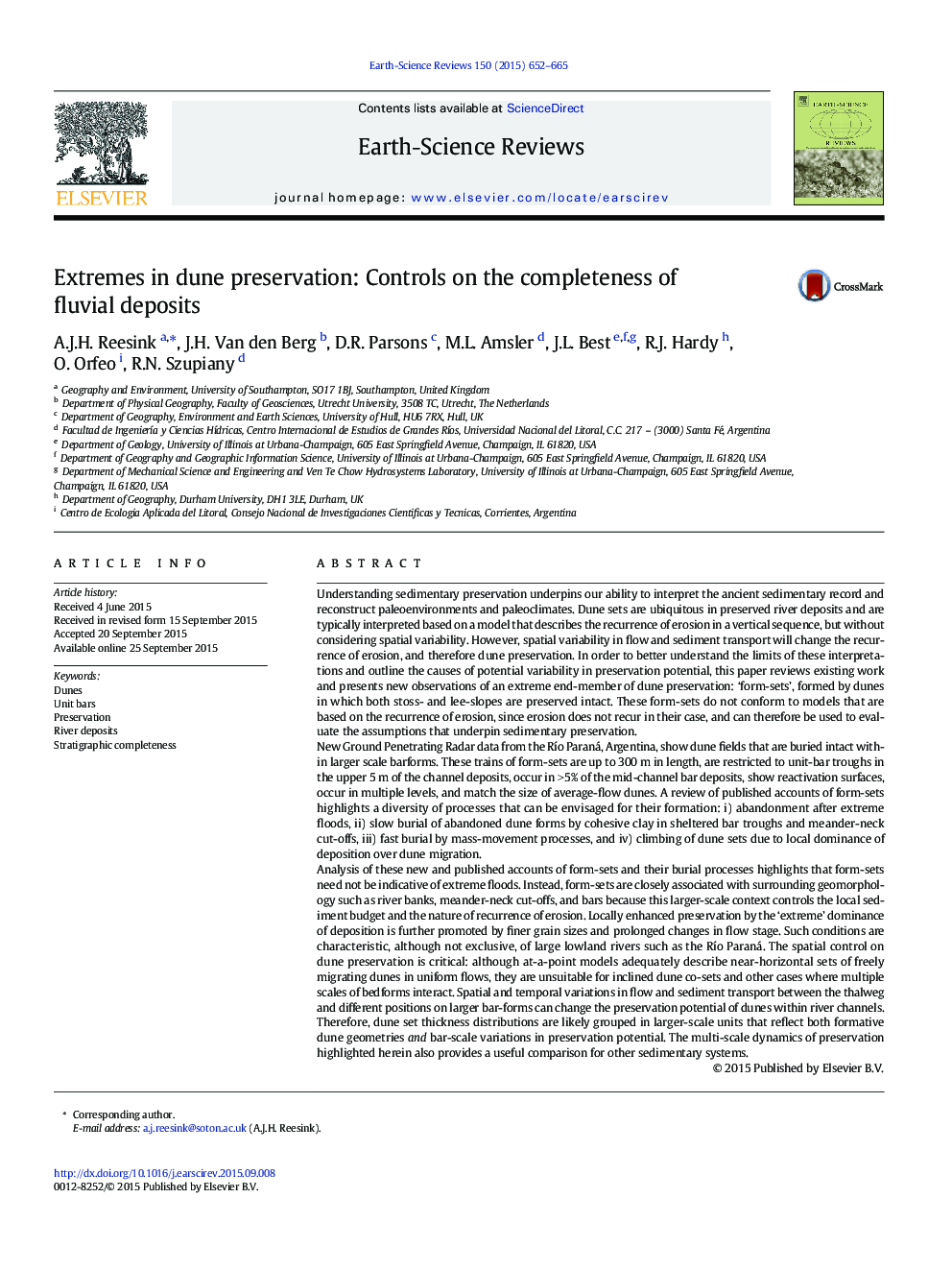| Article ID | Journal | Published Year | Pages | File Type |
|---|---|---|---|---|
| 6442938 | Earth-Science Reviews | 2015 | 14 Pages |
Abstract
Analysis of these new and published accounts of form-sets and their burial processes highlights that form-sets need not be indicative of extreme floods. Instead, form-sets are closely associated with surrounding geomorphology such as river banks, meander-neck cut-offs, and bars because this larger-scale context controls the local sediment budget and the nature of recurrence of erosion. Locally enhanced preservation by the 'extreme' dominance of deposition is further promoted by finer grain sizes and prolonged changes in flow stage. Such conditions are characteristic, although not exclusive, of large lowland rivers such as the RÃo Paraná. The spatial control on dune preservation is critical: although at-a-point models adequately describe near-horizontal sets of freely migrating dunes in uniform flows, they are unsuitable for inclined dune co-sets and other cases where multiple scales of bedforms interact. Spatial and temporal variations in flow and sediment transport between the thalweg and different positions on larger bar-forms can change the preservation potential of dunes within river channels. Therefore, dune set thickness distributions are likely grouped in larger-scale units that reflect both formative dune geometries and bar-scale variations in preservation potential. The multi-scale dynamics of preservation highlighted herein also provides a useful comparison for other sedimentary systems.
Keywords
Related Topics
Physical Sciences and Engineering
Earth and Planetary Sciences
Geology
Authors
A.J.H. Reesink, J.H. Van den Berg, D.R. Parsons, M.L. Amsler, J.L. Best, R.J. Hardy, O. Orfeo, R.N. Szupiany,
